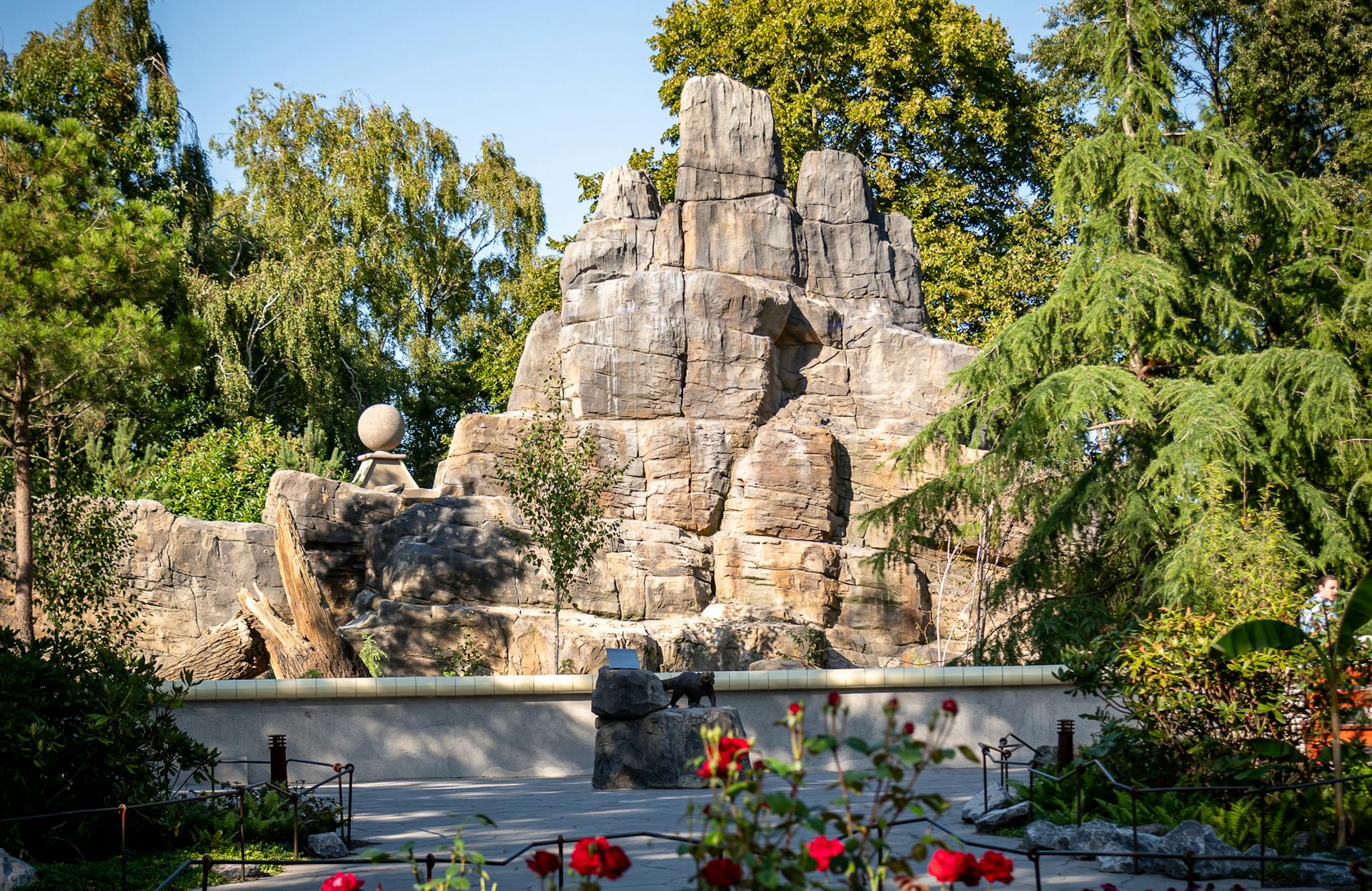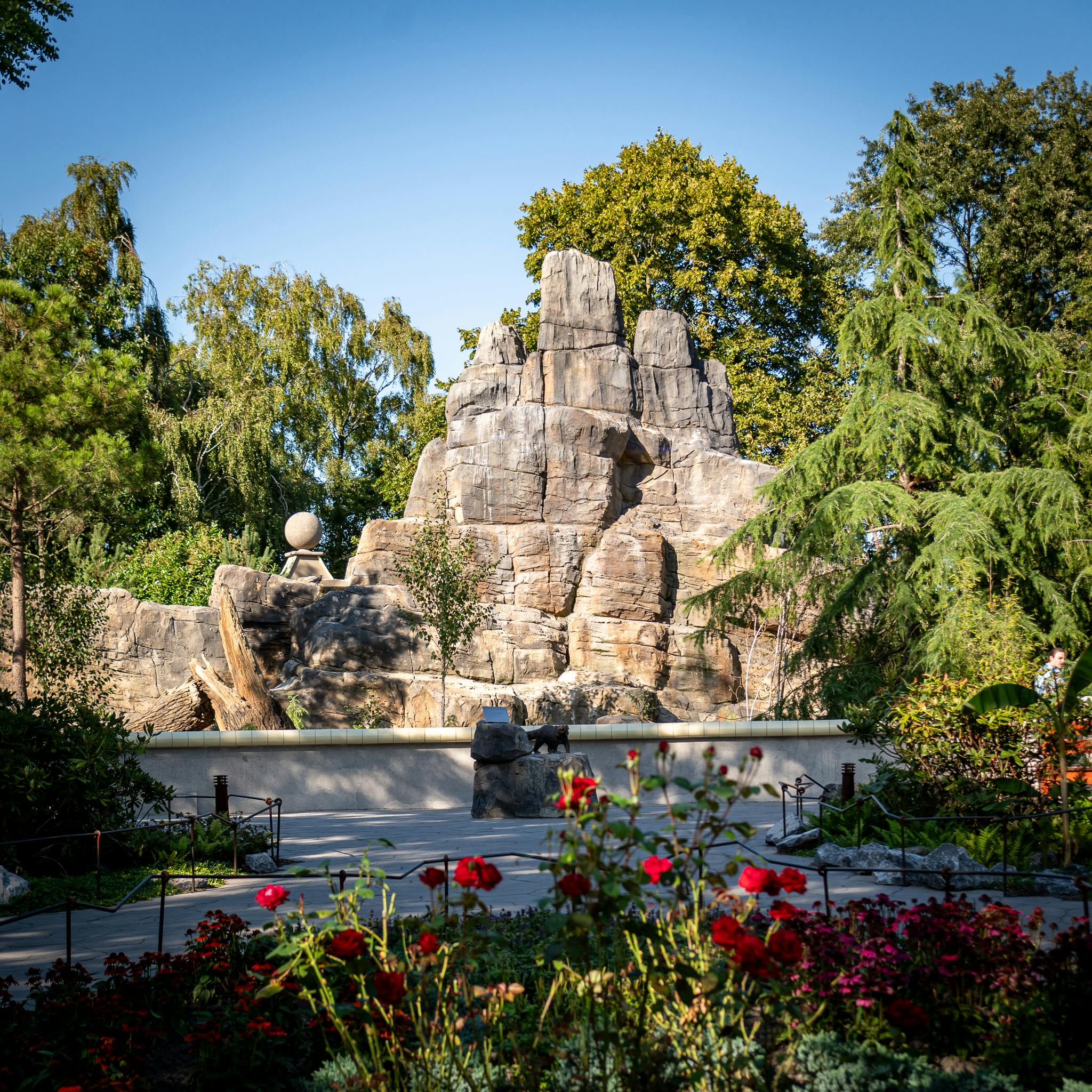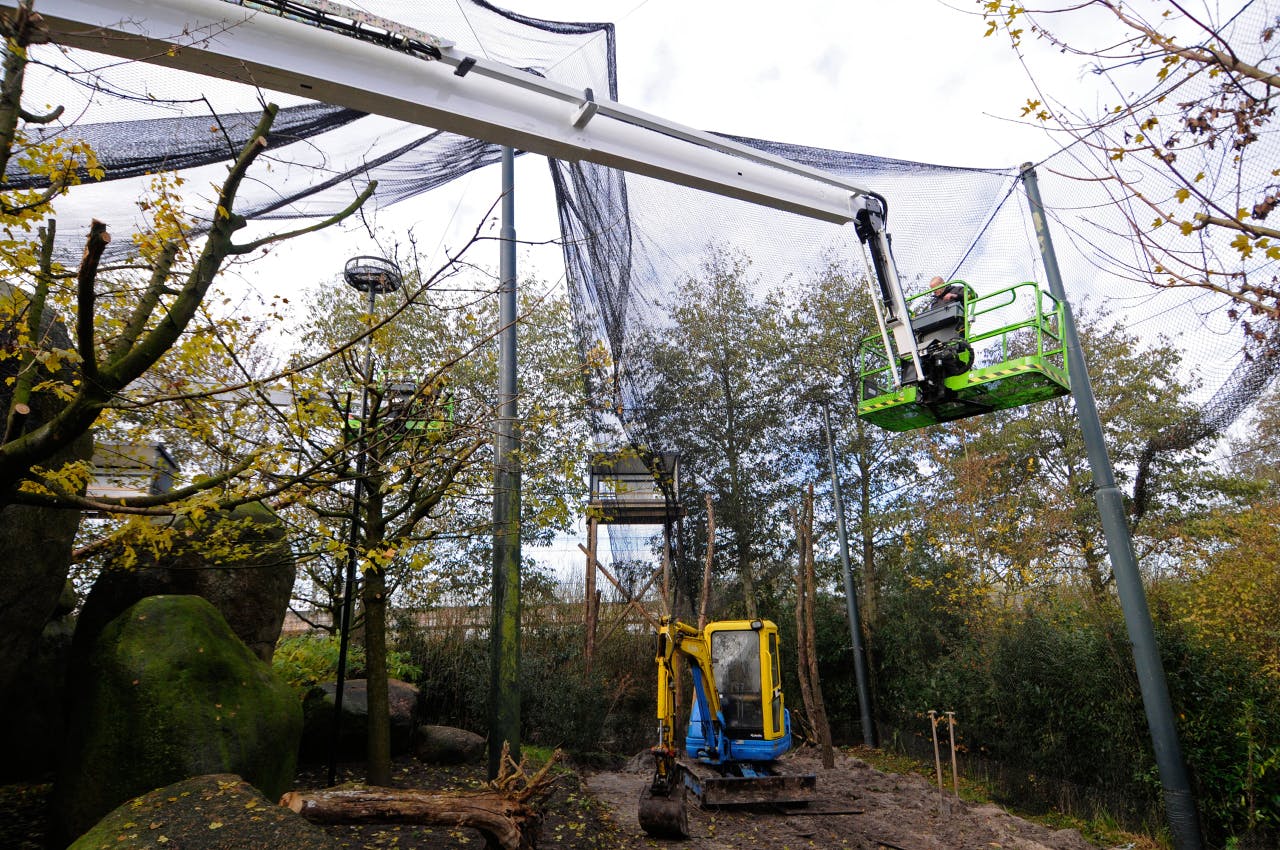A striking feature on the African savanna is the giraffe stable in the shape of an onion. The construction of this enclosure utilized sustainable materials and solutions. The design incorporates sustainable materials such as untreated wood with the FSC label and grasses like reed and compressed bamboo. There is also extensive use of natural elements like sun, wind, and rain. For instance, the sloped roof is transparent and angled to catch as much sunlight as possible, allowing for optimal use of solar heat.
On cold days, the 400 m3 large enclosure is only partially heated. The giraffes can seek out warmth themselves at 'cuddle walls.' The woodchip heater, which also heats the Crocodile River, provides the energy for this and uses wood chips instead of fossil fuels. Additionally, the rainwater that falls on the roof of the giraffe house is collected and used for watering the tropical plants in the adjacent Crocodile River.





